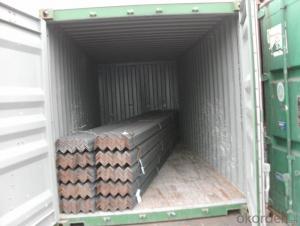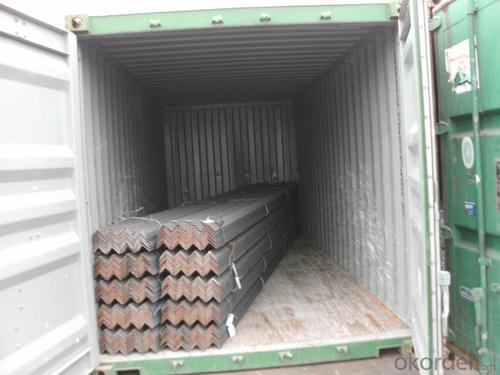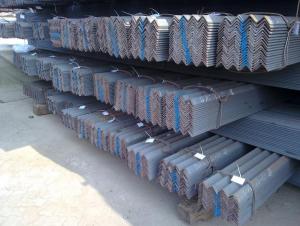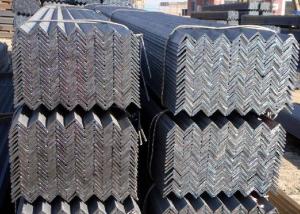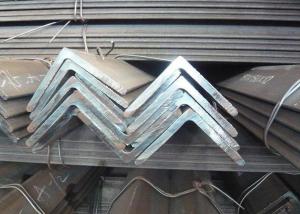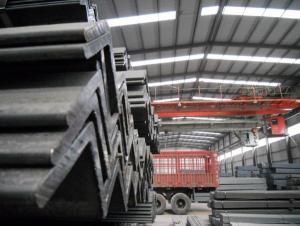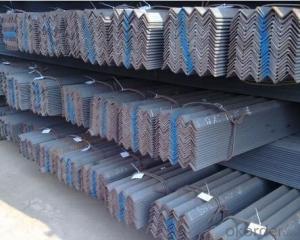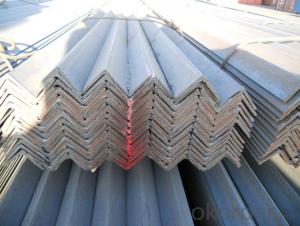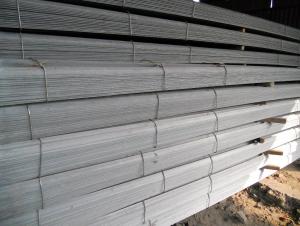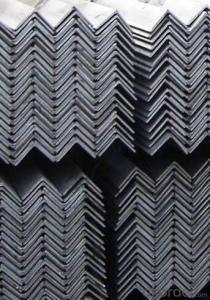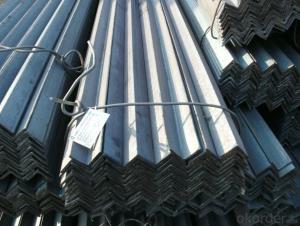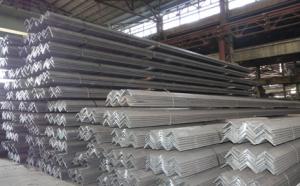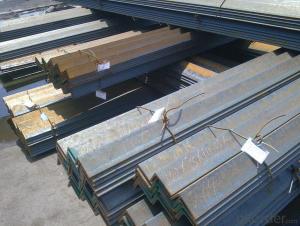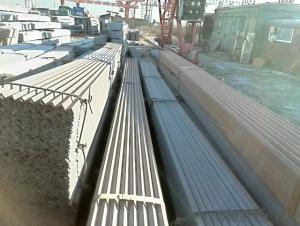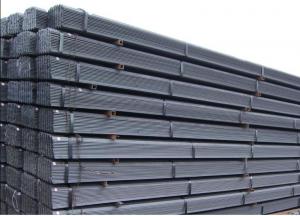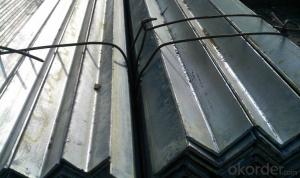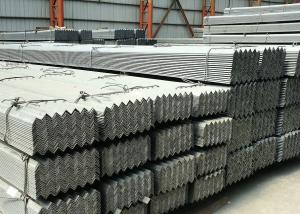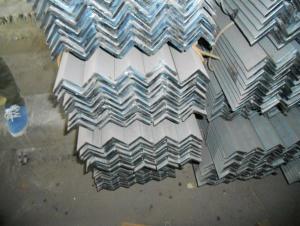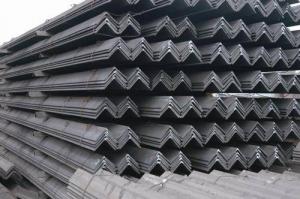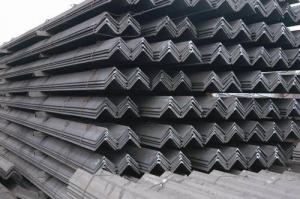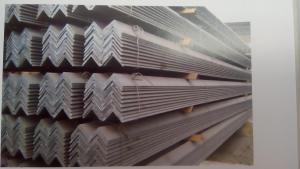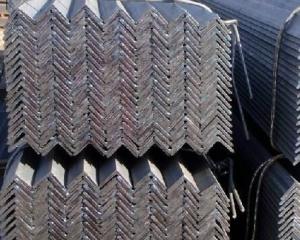Supply Hot Rolled Angle Steel to Africa Market
- Loading Port:
- Tianjin
- Payment Terms:
- TT OR LC
- Min Order Qty:
- 25 m.t.
- Supply Capability:
- 20000 m.t./month
OKorder Service Pledge
OKorder Financial Service
You Might Also Like
Specification
OKorder is offering high quality Hot Rolled Steel Angle at great prices with worldwide shipping. Our supplier is a world-class manufacturer of steel, with our products utilized the world over. OKorder annually supplies products to European, North American and Asian markets. We provide quotations within 24 hours of receiving an inquiry and guarantee competitive prices.
Product Applications:
Hot Rolled Steel Angles are ideal for structural applications and are widely used in the construction of buildings and bridges, and the manufacturing, petrochemical, and transportation industries.
Product Advantages:
OKorder's Steel Angles are durable, strong, and resist corrosion.
Main Product Features:
· Premium quality
· Prompt delivery & seaworthy packing (30 days after receiving deposit)
· Corrosion resistance
· Can be recycled and reused
· Mill test certification
· Professional Service
· Competitive pricing
Product Specifications:
Manufacture: Hot rolled
Grade: Q195 – 235
Certificates: ISO, SGS, BV, CIQ
Length: 6m – 12m, as per customer request
Packaging: Export packing, nude packing, bundled
Sizes: 25mm-250mm | ||
a*t | ||
25*2.5-4.0 | 70*6.0-9.0 | 130*9.0-15 |
30*2.5-6.6 | 75*6.0-9.0 | 140*10-14 |
36*3.0-5.0 | 80*5.0-10 | 150*10-20 |
38*2.3-6.0 | 90*7.0-10 | 160*10-16 |
40*3.0-5.0 | 100*6.0-12 | 175*12-15 |
45*4.0-6.0 | 110*8.0-10 | 180*12-18 |
50*4.0-6.0 | 120*6.0-15 | 200*14-25 |
60*4.0-8.0 | 125*8.0-14 | 250*25 |
FAQ:
Q1: Why buy Materials & Equipment from OKorder.com?
A1: All products offered byOKorder.com are carefully selected from China's most reliable manufacturing enterprises. Through its ISO certifications, OKorder.com adheres to the highest standards and a commitment to supply chain safety and customer satisfaction.
Q2: How do we guarantee the quality of our products?
A2: We have established an advanced quality management system which conducts strict quality tests at every step, from raw materials to the final product. At the same time, we provide extensive follow-up service assurances as required.
Q3: How soon can we receive the product after purchase?
A3: Within three days of placing an order, we will begin production. The specific shipping date is dependent upon international and government factors, but is typically 7 to 10 workdays.
Alloy No | Grade | Element (%) | ||||
C | Mn | S | P | Si | ||
Q235 | B | 0.12—0.20 | 0.3—0.7 | ≤0.045 | ≤0.045 | ≤0.3 |
Alloy No | Grade | Yielding strength point( Mpa) | ||||
Thickness (mm) | ||||||
≤16 | >16--40 | >40--60 | >60--100 | |||
≥ | ||||||
Q235 | B | 235 | 225 | 215 | 205 | |
Alloy No | Grade | Tensile strength (Mpa) | Elongation after fracture (%) | |||
Thickness (mm) | ||||||
≤16 | >16--40 | >40--60 | >60--100 | |||
≥ | ||||||
Q235 | B | 375--500 | 26 | 25 | 24 | 23 |
Images:
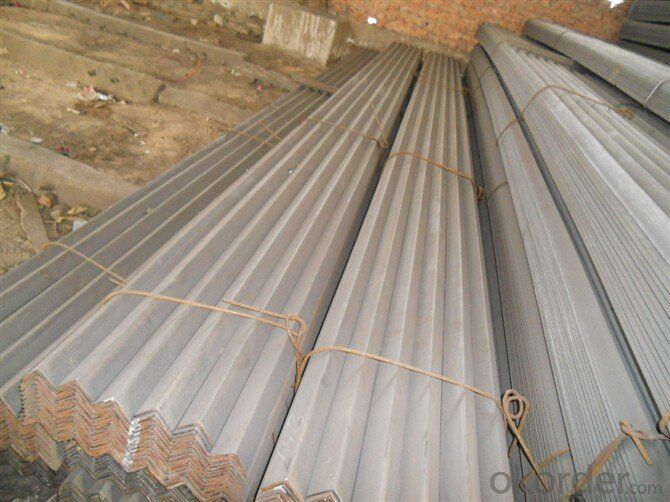
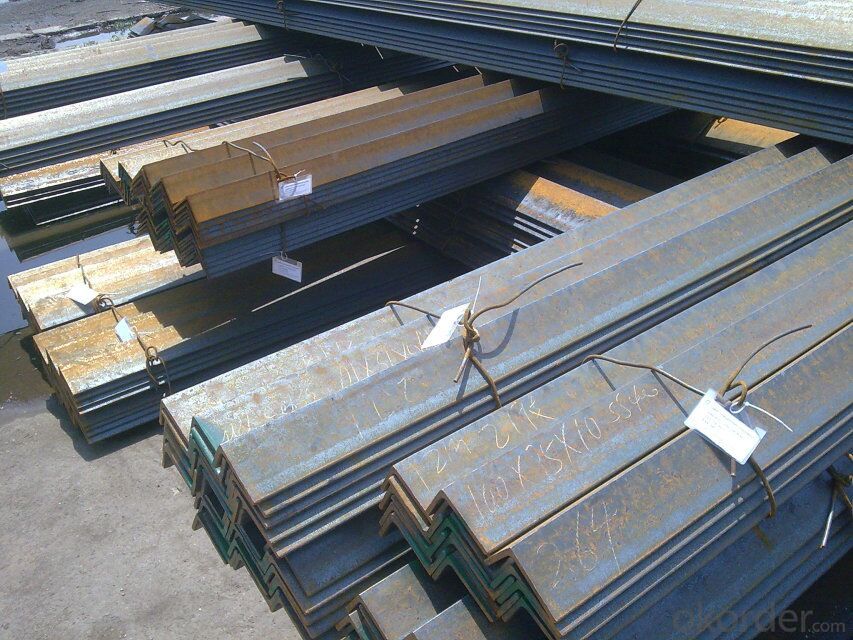
- Q: Unequal angle steel
- Unequal angle steel is a cross section, such as the letter "L", with each side of each other vertically angled and of unequal width. Its specifications are expressed in long, wide, short, wide and * thick edges, such as "L30*20*3", i.e., unequal angles with long sides, wide 30mm, short width, 20mm, and 3mm of edge thickness. Can also use the model (number) said that the model represented by a fraction, molecular side length cm wide, the denominator for the short side number of centimeters wide, such as "L3/2#", said the 3 cm long side, short side said 2 centimeters. The specifications for unequal angles are 2.5/1.6#-20/12.5#.
- Q: What are the standard sizes of steel angles?
- The region and industry dictate the standard sizes of steel angles, although there are widely utilized common sizes. Steel angles generally come in equal leg and unequal leg sizes. Equal leg angles have standard sizes ranging from 20x20mm to 200x200mm, with thicknesses ranging from 3mm to 26mm. Unequal leg angles have one leg longer than the other, and their standard sizes range from 25x16mm to 200x150mm, with thicknesses ranging from 3mm to 15mm. These standard sizes find widespread use in construction, engineering, and manufacturing industries for various purposes, including structural supports, framing, and bracing. It is worth noting that these sizes may differ based on project-specific requirements or industry-regulated standards.
- Q: How do steel angles perform under lateral or wind loading conditions?
- Due to their strength and versatility, steel angles find widespread use in construction and engineering. They excel in handling lateral or wind loading conditions, demonstrating exceptional performance. When subjected to lateral forces acting horizontally and perpendicular to their axis, steel angles exhibit remarkable rigidity and resistance to bending. Consequently, they can withstand substantial lateral loads, making them perfect for applications such as bracing systems, support structures, and framing components that need to resist wind, seismic, or other lateral forces. Similarly, steel angles prove their excellence in wind loading conditions. As wind exerts a strong lateral force on structures, steel angles effectively counteract these forces. By securely fastening steel angles to the structure, stability is ensured, preventing wind-induced vibrations or even collapse. To enhance the performance of steel angles under lateral or wind loading conditions, proper design and installation are crucial. Engineers take into account factors like angle size and thickness, steel type and quality, as well as connection details. By carefully analyzing specific loading conditions and selecting the appropriate steel angles, engineers guarantee that structures remain stable and safe, even under extreme lateral or wind loads. In conclusion, steel angles are highly reliable and durable in handling lateral or wind loading conditions. Their robustness, coupled with their cost-effectiveness and ease of installation, makes them a favored choice in numerous construction and engineering projects.
- Q: Can steel angles be welded together?
- Yes, steel angles can be welded together.
- Q: Can steel angles be used for manufacturing bike racks?
- Yes, steel angles can be used for manufacturing bike racks. Steel angles provide strength and durability, making them suitable for supporting the weight of multiple bicycles. Additionally, steel angles can be easily welded or bolted together to create a sturdy frame for the bike rack. The versatility of steel angles allows for customization and design flexibility to accommodate different types and sizes of bicycles. Furthermore, steel angles can withstand outdoor conditions and are resistant to rust and corrosion, ensuring the longevity of the bike rack. Overall, steel angles are a reliable and practical choice for manufacturing bike racks.
- Q: Can steel angles be used for window frames?
- Yes, steel angles can be used for window frames. Steel angles provide stability, strength, and durability, making them a suitable choice for supporting and framing windows.
- Q: What is the lifespan of a steel angle?
- The lifespan of a steel angle can vary depending on various factors such as the quality of the steel, the environment it is exposed to, and the level of maintenance it receives. However, in general, steel angles are known for their durability and long lifespan. With proper care and regular maintenance, a steel angle can last for several decades or even beyond. The corrosion resistance of the steel, protective coatings, and measures taken to prevent rust and deterioration can significantly extend its lifespan. Furthermore, factors such as load-bearing capacity, structural integrity, and overall design play a crucial role in determining the lifespan of a steel angle. Therefore, it is essential to consider the specific application and consult with professionals to ensure optimal performance and longevity.
- Q: Are steel angles resistant to vibrations?
- The strength and durability of steel angles are well-known, but their ability to resist vibrations can vary due to factors like steel thickness, quality, angle design, and application. Generally, steel angles possess good stiffness and can somewhat dampen vibrations. However, if vibrations are intense or if the angle is poorly designed or installed, it may be prone to fatigue failure or excessive movement. To improve vibration resistance, one can employ measures like using thicker steel angles, incorporating proper bracing or support structures, or utilizing vibration damping materials. Therefore, it is crucial to consider the specific requirements and conditions of the application when assessing the suitability of steel angles for vibration resistance.
- Q: How do steel angles contribute to sustainable construction?
- Steel angles contribute to sustainable construction in multiple ways. Firstly, steel is an incredibly durable and long-lasting material, which means that structures built using steel angles will have a longer lifespan compared to those made with other materials. This reduces the need for frequent repairs or replacements, thus minimizing waste and reducing the overall environmental impact of construction. Secondly, steel is a highly recyclable material. At the end of a structure's life cycle, steel angles can be easily recycled and repurposed for other construction projects. This reduces the demand for new steel production, which is energy-intensive and can result in significant carbon emissions. Additionally, steel angles offer design flexibility, allowing architects and engineers to create more efficient and innovative structures. This can lead to optimized building designs that require less energy for heating, cooling, and maintenance, contributing to energy savings and reduced greenhouse gas emissions. Moreover, steel angles are lightweight yet incredibly strong, resulting in less material usage and reduced transportation costs. As a result, the overall carbon footprint associated with steel construction is lower compared to other materials. Furthermore, steel angles have excellent fire resistance properties, making them a safer choice for construction. This increases the longevity of structures and reduces the risk of damage or destruction during fires. Consequently, the need for rebuilding or reconstructing is reduced, leading to less material waste and environmental impact. In conclusion, steel angles contribute to sustainable construction through their durability, recyclability, design flexibility, energy efficiency, lightweight nature, fire resistance, and overall reduced environmental impact. By incorporating steel angles into construction projects, we can create more sustainable and environmentally friendly structures that benefit both the present and future generations.
- Q: Can steel angles be used in mezzanine flooring systems?
- Yes, steel angles can be used in mezzanine flooring systems. Steel angles are commonly used as structural elements in mezzanine construction due to their strength and durability. They can be used as supports, beams, or bracing members in mezzanine flooring systems, providing stability and load-bearing capacity. Steel angles are versatile and can be easily customized and installed to suit specific design requirements. They are also cost-effective and provide a reliable solution for creating additional floor space in industrial and commercial buildings.
Send your message to us
Supply Hot Rolled Angle Steel to Africa Market
- Loading Port:
- Tianjin
- Payment Terms:
- TT OR LC
- Min Order Qty:
- 25 m.t.
- Supply Capability:
- 20000 m.t./month
OKorder Service Pledge
OKorder Financial Service
Similar products
Hot products
Hot Searches
Related keywords
